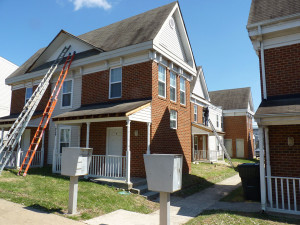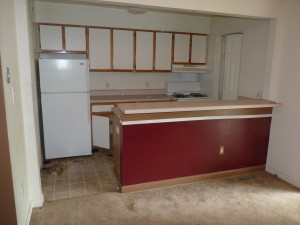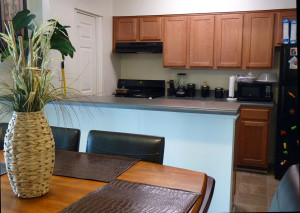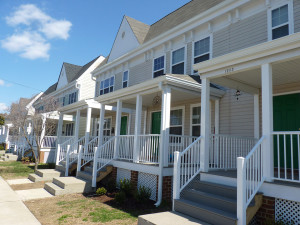
In 2012, Cassandra Brown and her daughter, Rankeisha, moved into an apartment in BHC’s Jefferson Mews community in North Church Hill. “Just when we felt like we had finally put everything away, we had to pack up and temporarily relocate,” Brown said, referring to BHC’s major undertaking to preserve and update 56 apartments in North Church Hill.
“When it was over, it was like moving into a brand new apartment,” she said. “I love it.”
“While BHC is known for developing affordable housing, we also believe it’s important to preserve affordable housing,” said Greta Harris, president and CEO of BHC.
If developers don’t make an effort to preserve affordable homes, one of two things can happen: market-rate housing may proliferate and displace long-time residents, or the homes can fall into disrepair, neglect and blight. “Neither of those is acceptable, in our view,” added Harris.
The “occupied rehab” project that BHC conducted over 10 months in 2013-2014 entailed substantial interior and exterior work to improve apartments in Jefferson Mews and in several scattered sites throughout a six-block area. The collective units are now all now referred to as Jefferson Mews.

Orchestrating the Rehabs
“This renovation project would have been challenging enough if the apartments were empty, but when families are living on site, it can get complicated,” said Bernard Rogers, BHC’s senior project manager who led the project. “Staying on schedule is important to minimize disruption to the families, and one hitch can affect the whole plan,” he added.

The tightly choreographed initiative required constant communication and coordination among staff and residents. To minimize the number of residents inconvenienced at one time, BHC worked on four units concurrently.

“Residents left their apartments from 8 a.m. – 4 p.m. Monday through Friday for the first week of interior renovations,” said Jeff Reynolds, BHC’s construction projects manager. “During the second week, they vacated the units entirely and stayed in hotel rooms that we provided.”
BHC’s property management and maintenance divisions worked closely with residents on everything from providing packing boxes to moving and storing belongings and booking hotel rooms. Staff also arranged for residents who normally were home during the day to stay on-site at Carter Woods, a large BHC property for seniors a few miles away, and transported them back and forth.
New and Improved
Much thought goes into the materials used in the renovations, too.
“Part of our ongoing plan for our entire portfolio is to replace the aging exterior components such as windows, siding, porch railings and stairs with more sustainable and lasting materials,” said Reynolds. “We also air-seal the building ‘envelope’ and upgrade crawlspace and attic insulation. Doing so results in lower maintenance costs for us and for residents in the long run.”
In addition to replacing all of those exterior components and refreshing the landscaping, the project included such interior improvements as new sinks, faucets, cabinets, floor coverings and light fixtures in the kitchens and bathrooms, new kitchen appliances and countertops, and new mini-blinds, carpet and HVAC systems.
The Price of Preservation
When complete, the total cost of the occupied rehab will be more than $6.6 million.

“We were fortunate to obtain nearly $2 million in tax credit equity through the federal Low-Income Housing Tax Credit (LIHTC) program administered by the VHDA,” said Rogers. “Being able to access LIHTC funding allows us to borrow less from conventional sources, and that helps us keep the rents lower for our residents.”
Despite the inconvenience of being displaced for a few weeks while the rehab took place, the vast majority of residents surveyed echoed Cassandra Brown’s sentiment: “In the end, it was worth it.”